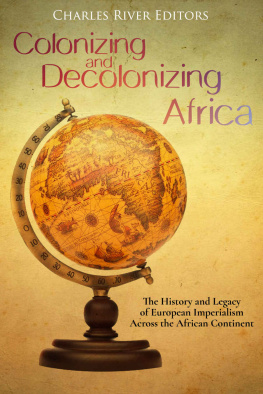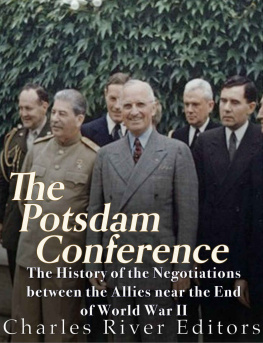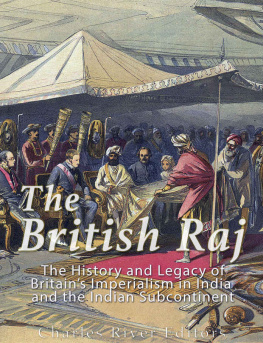The British Subjugation of Australia: The History of British Colonization and the Conquest of the Aboriginal Australians
By Charles River Editors

A 1796 map depicting the region
About Charles River Editors

Charles River Editors is a boutique digital publishing company, specializing in bringing history back to life with educational and engaging books on a wide range of topics. Keep up to date with our new and free offerings with this 5 second sign up on our weekly mailing list , and visit Our Kindle Author Page to see other recently published Kindle titles.
We make these books for you and always want to know our readers opinions, so we encourage you to leave reviews and look forward to publishing new and exciting titles each week.
Introduction

The Subjugation of Australia
It is quite time that our children were taught a little more about their country, for shames sake. Henry Lawson, Australian poet
A land of almost 3 million square miles has lain since time immemorial on the southern flank of the planet, so isolated that it remained almost entirely outside of European knowledge until 1770. From there, however, the subjugation of Australia would take place rapidly. Within 20 years of the first British settlements being established, the British presence in Terra Australis was secure, and no other major power was likely to mount a challenge. In 1815, Napoleon would be defeated at Waterloo, and soon afterwards would be standing on the barren cliffs of Saint Helena, staring across the limitless Atlantic. The French, without a fleet, were out of the picture, the Germans were yet to establish a unified state, let alone an overseas empire of any significance, and the Dutch were no longer counted among the top tier of European powers.
Australia lay at an enormous distance from London, and its administration was barely supervised. Thus, its development was slow in the beginning, and its function remained narrowly defined, but as the 19 th century progressed and peace took hold over Europe, things began to change. Immigration was steady, and the small spores of European habitation on the continent steadily grew. At the same time, the Royal Navy found itself with enormous resources of men and ships at a time when there was no war to fight. British sailors were thus employed for survey and exploration work, and the great expanses of Australia attracted particular interest. It was an exciting time, and an exciting age - the world was slowly coming under European sway, and Britain was rapidly emerging as its leader.
That said, the 19 th century certainly wasnt exciting for the people who already lived in Australia. The history of the indigenous inhabitants of Australia, known in contemporary anthropology as the Aboriginal and Torres Strait Islander people of Australia, is a complex and continually evolving field of study, and it has been colored by politics. For generations after the arrival of whites in Australia, the Aboriginal people were disregarded and marginalized, largely because they offered little in the way of a labor resource, and they occupied land required for European settlement.
At the same time, it is a misconception that indigenous Australians meekly accepted the invasion of their country by the British, for they did not. They certainly resisted, but as far as colonial wars during that era went, the frontier conflicts of Australia did not warrant a great deal of attention. Indigenous Australians were hardly a warlike people, and without central organization, or political cohesion beyond scattered family groups, they succumbed to the orchestrated advance of white settlement with passionate, but futile resistance. In many instances, aggressive clashes between the two groups simply gave the white colonists reasonable cause to inflict a style of genocide on the Aborigines that stood in the way of progress.
In any case, their fate had largely been sealed by the first European sneeze in the Terra Australis, which preceded the importation of the two signature mediums of social destruction. The first was a collection of alien diseases, chief among smallpox, but also cholera, influenza, measles, tuberculosis, syphilis and the common cold. The second was alcohol. Smallpox alone killed more than 50% of the aboriginal population, and once the fabric of indigenous society had crumbled, alcohol provided emotional relief, but relegated huge numbers of Aborigines to the margins of a robust and emerging colonial society.
The British Subjugation of Australia: The History of British Colonization and the Conquest of the Aboriginal Australians analyzes the rapid colonization and the ramifications for everyone on the continent. Along with pictures of important people, places, and events, you will learn about the subjugation of Australia like never before.
.
The British Claim
The earliest entry by Europeans upon the Indian Ocean was by the Portuguese mariner Bartholomew Dias, who rounded the Cape of Storms (later the Cape of Good Hope) in 1488. He ventured no further than the confluence of the Atlantic and Indian Oceans, and it would not be for another decade that his compatriot Vasco da Gama pressed his discoveries further east to the coast of India. The Portuguese then established a presence on the east coast of Africa, and with the entire Orient to themselves, undertook numerous voyages of exploration, not all of which were directly recorded. There is, therefore, a school of thought advocating the notion that it was the Portuguese who were the first Europeans to lay eyes on the great southern land. Supporting this theory are ancient Portuguese maps of a coast that may well be Australia, and occasional relics of Portuguese origin that have been found in various places in Australia.
Perhaps the most compelling argument in favor of prior Portuguese discovery is logic. The Portuguese established colonies in India and various other points in Southeast Asia, with Portuguese Timor a mere 400 miles from the Australian coast. Bearing in mind the scope of Portuguese maritime exploration, there is no reason at all to assume that the Portuguese would not have followed the natural progression of the Malay Archipelago to arrive precisely on the north shore of Terra Australis. This would certainly be in character, and as early Portuguese mariners cruised the Malay Archipelago, it seems almost inevitable that they would have bumped into Australia. They could hardly have conceived of what it was, but it would nonetheless have given them prior claim.
Nonetheless, in the end, it was Dutch mariner Willem Janszoon, aboard the Dutch East India Company vessel Duyfken, who claimed those laurels. It is now an accepted fact that his expedition was the first to touch the shores of what would today be the northern tip of Queensland.
Janszoon was followed very soon afterwards by a Spanish expedition led by Portuguese navigator Pedro Fernandes de Queirs. This small fleet arrived from the east, having made numerous smaller discoveries en route around Cape Horn. Queirs in fact mistakenly took the New Hebrides to be the much-storied southern continent, so he named it Austrialia del Espiritu Santo, or the Southern Land of the Holy Spirit, in honor of the Spanish queen Margaret of Austria. The next to broach the horizon was a subordinate captain of Queirs named Lus Vaz de Torres, who sailed in from the east in July 1606. Sticking to the south shore of Papua, New Guinea, he passed through Torres Strait, which was subsequently named after him. He paused briefly on the northern tip of Cape York before continuing on through the Malay Archipelago.




















